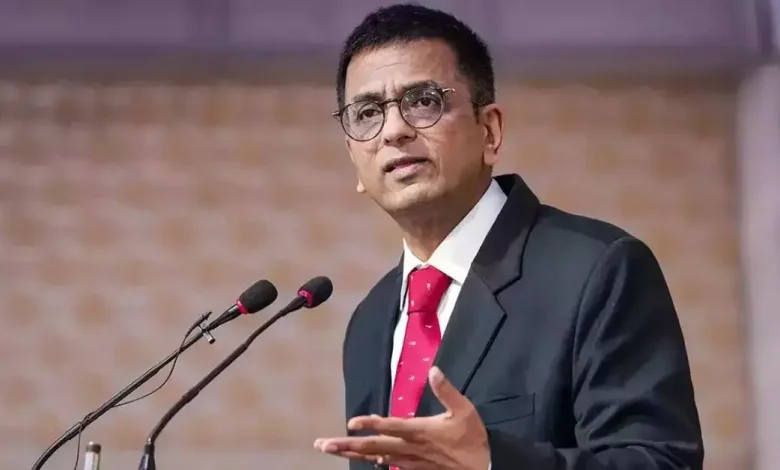Daily Current Affairs for UPSC
CJI highlighted four significant matters relating to the legal profession
Syllabus Polity[GS Paper-2]

Context: During the Supreme Court’s 75th anniversary, the Chief Justice of India identified four pressing issues within the judiciary that need to be discussed openly and resolved.
Four issues that CJI mentioned to reform Indian Judiciary:
- Adjournment culture and its effect on justice delivery:
- An adjournment is when a court postpones a scheduled hearing to a later date.
- The Civil Procedure Code provides guidelines for granting adjournments, limiting parties to three during a lawsuit.
- The 239th Law Commission Report identified the cause of delays in criminal cases, highlighting how advocates exploit the court’s heavy workload to request adjournments.
- This creates a harmful cycle where adjournments lead to increased workloads and more adjournments.
- Keeping the length of oral arguments in check:
- In constitutional bench cases, the court often instructs the parties to agree on a schedule for oral arguments to save time and prevent repetition.
- This practice originated from the Ayodhya title dispute.
- The 99th Law Commission Report in 1984 recommended limiting argument times to 30 minutes, while the 230th Law Commission Report in 2009 suggested extending it to one and a half hours, unless the case involved constitutional interpretation or a complex legal question.
- Alternatives to long court vacations:
- The Chief Justice of India mentioned the possibility of implementing flexi-time for lawyers and judges, allowing them to choose their own working hours as long as they fulfill a certain total number of hours.
- The Supreme Court last addressed the length of vacations in 2014, and recently notified new rules stating that summer vacation should not exceed seven weeks, reducing it from ten weeks.
- This change aligns with recommendations from the Malimath Committee Report in 2003, which suggested increasing working days at the Supreme Court by three weeks.
- A level playing field for first generation lawyers:
- The Chief Justice of India emphasised the importance of creating equal opportunities for first-generation lawyers and those from marginalised backgrounds who have the determination and capability to succeed.
- He mentioned that there has been positive progress in terms of female representation in the judiciary, with a significant number of women judges in district courts and a high percentage of women candidates selected for junior civil judge positions.
- Additionally, a considerable portion of female candidates applied for law clerk positions at the Supreme Court.
What is the reason behind the call for judiciary reform in India?
- The judiciary in India is overburdened, and it runs at snail pace which leaves a pile-up of cases that cause a large amount of pain for the people involved.
- There is a large population of ‘under trial’ prisoners in India and the majority of the inmates awaiting trial due to the long legal delays.
- The sentiment of frustration with the slow judicial system has forced the people to pursue other means of settling the cases.
- It is significant for the securing of order, social justice and guarantee of justice in Indian society that the judiciary is highly alleviated upon.
- The integrity of judiciary is key for legitimacy of courts and their mandate to define laws and define social behaviour.
Proposals for reforming the judiciary system in India:
- Although the idea of e-Courts was first introduced in 2005, the project had its goal to apply technical innovativeness while enhancing the efficiency of the justice branch.
- It can be used as a prototype to improve judiciary performance.
- Reformative measures are called for at the level of structural reorganisation of the administration within the judiciary to observe the demands and sentiments of all the interested parties.
- A National Judicial Infrastructure Corporation is suggested to address the administrative matter associated with the judiciary.
- National Mission for Justice Delivery and Legal Reforms mission is to resolve the delays and backlogs of the system through improving infrastructure of courts, Computerization, increases in the number of subordinate judges and supplementing policies and legislative measures.
- Making judges appointments would have to be reformed to ensure the collegium system is based on merit and transparency meritocratic selection as well as satisfy the deserving candidates.
Conclusion:
- The Chief Justice of India has recognized important problems in the judiciary and highlighted the need for immediate reforms.
- These issues include dealing with frequent delays and improving oral arguments, finding alternatives to court vacations, and ensuring fairness.
- It is crucial to have open discussions and take proactive steps to make the Indian judiciary more efficient and inclusive.
Source: Indian Express





.png)



